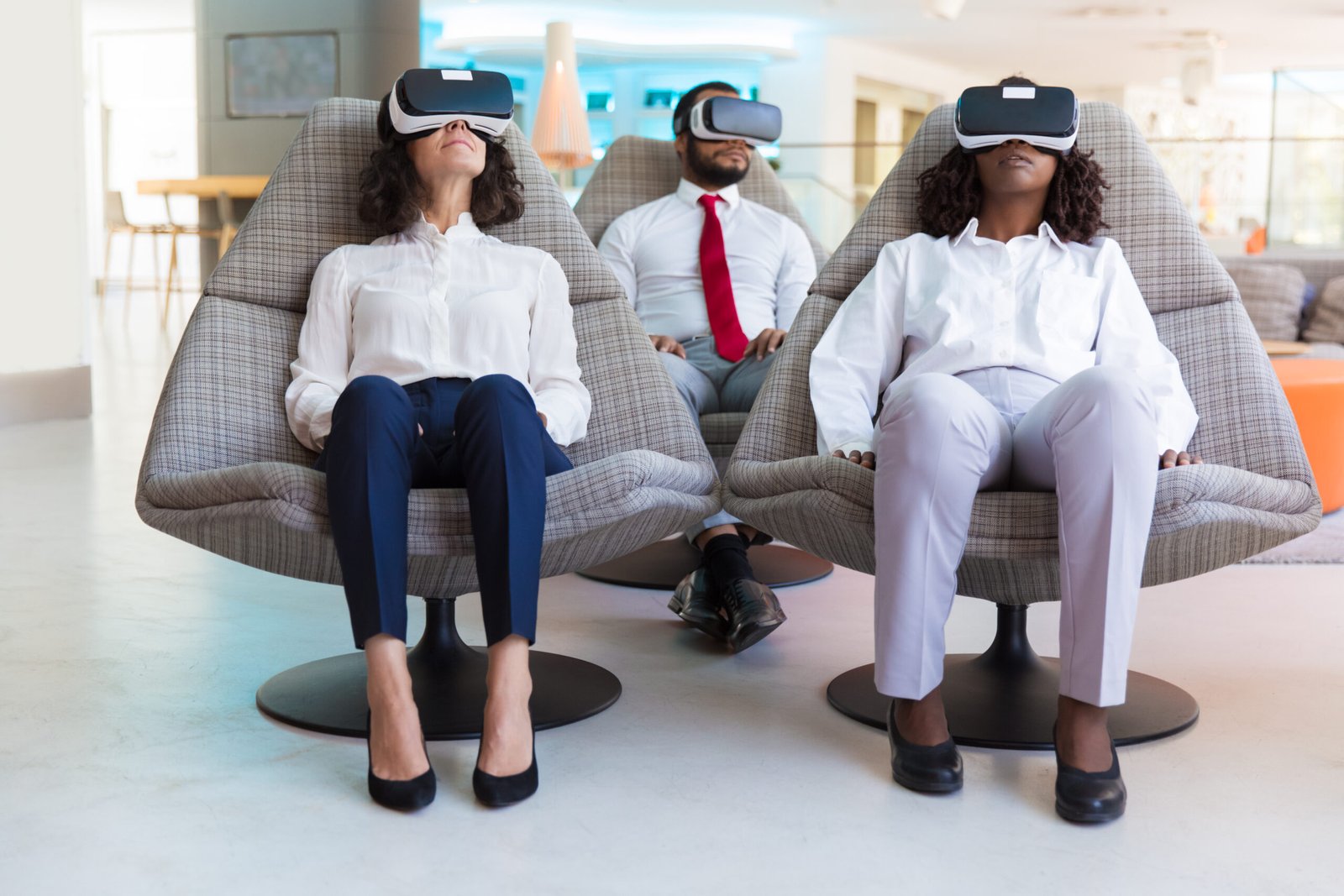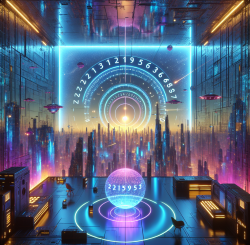Virtual Studio Technology:Backbone of Modern Media Production

Introduction to Virtual Studio Technology: Unveiling the Future of Media Production
The use of Virtual Studio Technology (VS) in the creation and presentation of media has revolutionised the industry. Its capacity to combine digital and real-world aspects has caused a paradigm shift in fields such as education, film, and television. Visual Studio Technology (VAT) provides an opportunity for artists, teachers, and filmmakers to create high-quality content free from conventional constraints. Production landscapes are being redefined by VAT, which allows users to build immersive virtual sets and enable collaborative workflows.
My question is, how did we end up in this situation? In what ways does this technology work? What makes it so important for companies and artists? This article delves into these inquiries while illuminating real-world uses, benefits, and difficulties.
The Evolution of Virtual Studio Technology in Media
Virtual studio technology didn’t emerge overnight—it’s the result of years of innovation and adaptation in media production.
A Brief Historical Timeline of VST:
- 1980s and 1990s: The foundation of virtual studios was laid with chrome keying, commonly known as “green screen” technology. Early applications primarily catered to weather broadcasts and simple overlays.
- 2000s: Advancements in computing power allowed for real-time rendering and visualisation, bridging the gap between virtual and physical elements.
- 2010s: High-powered graphics engines like Unreal Engine and Unity introduced more robust virtual environments, making VST available to filmmakers and production houses.
- 2020s: Driven by the COVID-19 epidemic, virtual studio usage shot, allowing remote productions, hybrid learning solutions, and virtual events to flourish.
VST nowadays is a dynamic mix of hardware and software that instantly combines virtual surroundings with live-action features.
How Virtual Studio Technology Works: Understanding the Magic Behind the Screens
At its core, it combines key components to produce seamless results.
Key Elements of Virtual Studio Technology:
- Green Screen/LED Walls: Live-action footage is filmed in front of either traditional green screens or advanced LED panels displaying real-time backgrounds.
- Motion Tracking: Cameras equipped with motion-tracking sensors ensure virtual environments adjust according to the camera’s position and angle.
- Rendering Engines: Software like Unreal Engine processes virtual environments in real-time, creating visually stunning and interactive backgrounds.
- Post-Production Flexibility: Once the footage is captured, VST allows for extensive edits to refine visuals, add special effects, or tweak lighting and textures.
These technologies work together to create a unified image that appears natural for both the live-action and virtual elements.
Applications of Virtual Studio Technology in Various Industries
Virtual studio technology has permeated diverse fields, each leveraging its capabilities for unique benefits.
1. Film & Television Production
- Virtual sets reduce the need for expensive physical builds, enabling filmmakers to shoot in realistic landscapes without leaving the studio.
- Shows like The Mandalorian have used LED walls and real-time rendering for immersive storytelling.
2. Education
- Universities use VST to create virtual classrooms and interactive lectures.
- Subjects like medical sciences and architecture benefit from simulated environments, enabling more effective learning.
3. Corporate and Training Videos
- Companies use virtual studios to create professional presentation backgrounds, boosting the quality of online webinars and training programs.
4. Event and Entertainment Industries
- Hybrid events, fashion shows, and award functions have leveraged VST to create interactive stages and immersive viewing experiences.
5. Gaming and Livestreaming
- Game developers use VST to build lifelike environments, and streamers use its dynamic capabilities to engage with their audiences creatively.
Advantages and Benefits of Using Virtual Studio Technology
Why has virtual studio technology become a preferred choice?
Key Benefits:
- Cost Savings: VST reduces the need for extensive travel and physical set construction.
- Flexibility: Creators can adapt virtual environments on-the-fly, allowing seamless adjustments during live productions.
- Sustainability: Environmental impact decreases significantly by replacing resource-heavy physical sets with virtual options.
- Enhanced Creativity: Virtual sets allow directors and creators to imagine (and create) the impossible.
- Collaboration: Teams working remotely can collaborate on productions using cloud-based VST tools.
Expert Quote:
“Virtual studio technology has fundamentally changed the way we tell stories,” says Alex Carter, a filmmaker. “It’s opened doors to unprecedented creativity with lower costs.”
Challenges and Limitations of Virtual Studio Technology
Despite its benefits, VST comes with certain challenges.
Common Hurdles:
- Initial Costs: Setting up a virtual studio requires significant investment in hardware and software.
- Technical Expertise: Using advanced VST tools often requires specialized training, which may not be accessible to all.
- Infrastructure Requirements: Robust internet and storage solutions are prerequisites, particularly for cloud-enabled workflows.
Expert Insight:
“While the technology is groundbreaking, it’s not plug-and-play. Hiring skilled professionals remains critical to virtual production,” explains Sarah Lewis, a virtual production specialist.
The Future of Virtual Studio Technology
Thanks to developments in cloud computing, artificial intelligence, and machine learning, virtual studio technology has a bright future.
Upcoming Trends:
- AI Integration: AI tools will enable faster rendering, more realistic effects, and predictive editing suggestions.
- Meta-Studios: Virtual studios could evolve into shared spaces in the met averse, improving collaboration across geographical barriers.
- Custom Virtual Sets: Creators may soon design entire worlds through interfaces as simple as drag and drop.
Expert Opinion:
“We’re only scratching the surface,” notes Prof. David Harper. “The potential applications of virtual studio technology are as limitless as human imagination.”
Case Studies of Successful Integration of Virtual Studio Technology
1. Pixar’s Animated Features:
VST helped improve efficiency and quality in creating movies like Soul. Thanks to real-time rendering, animators fine-tuned scenes with precision.
2. Virtual Set Newsrooms:
Major news networks now use virtual sets to create interactive graphics that improve viewer engagement.
3. Digital Fashion Shows:
During the pandemic, leading fashion brands used virtual production to transition their runway shows to digital-first experiences.
Tips for Content Creators, Filmmakers, and Educators on Utilizing Virtual Studio Technology
If you’re looking to integrate VST into your work, here are some practical tips to get started.
- Start Small: Use more affordable tools and build your way up as your expertise (and budget) grows.
- Invest in Training: Use online resources or collaborate with professionals to gain a strong understanding of the technology.
- Experiment Creatively: Leverage the flexibility offered by virtual environments to test unconventional ideas and create unique content.
- Collaborate with Experts: Partnering with VST engineers or designers can simplify the transition from traditional setups.
The Impact and Promise of Virtual Studio Technology
Virtual studio technology represents a shift, breaking down barriers to creativity while democratizing high-quality production. Professionals from various fields now have opportunities to tell stories, educate, and entertain using tools once reserved for massive studios.
Virtual Studio Technology (VST) has the potential to be the future-proof tool for anybody in the film industry, from educators creating immersive classrooms to corporate executives rethinking their content strategy.
Is jumping in the deep enough for you? You may practically build the stage on your own.


